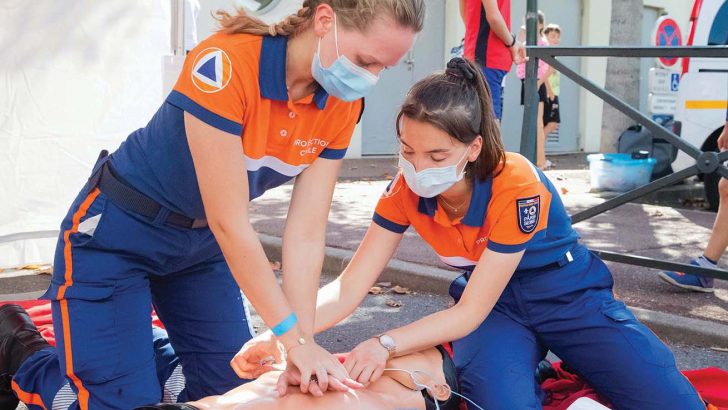Medical Matters
Every year in Ireland, there are approximately 2,500 out of hospital cardiac arrests, with a rising proportion of cases that occur outside the home having CPR performed by bystanders. The cardiac arrest of the Danish footballer Christian Eriksen on live television has highlighted the importance and success of rapid CPR and defibrillation. Indeed, the growing awareness about sudden cardiac arrests has led to an increase in the number of defibrillators around the country.
The ‘Out of Hospital, Cardiac Arrest Report’ for Ireland, published in 2020 sheds light on the number of cases nationally. In 2019, there were 2564 cardiac arrests with 68% occurring at home and affecting twice as many men as women. The vast majority (86%) had a medical cause though nearly one in six were as a result of other causes such as trauma, choking, drug overdose or drowning. About 50% of cases were actually in people under 68 years of age with nearly 10% in those under 35.
In younger people, structural problems in the heart (cardiomyopathies), genetic conditions that predispose to arrhythmias and viral infections (myocarditis) can lead to cardiac arrest. For example, the GAA player Cormac McAnallen died in 2004 from congenital long QT syndrome, a genetic condition that leads to abnormal sodium channels in the heart increasing the risk of cardiac arrhythmias. However, there are often no underlying symptoms and it is estimated that up to 100 young adults die in Ireland every year from Sudden Arrhythmic Death Syndrome (SADS).
Increase
While the overall survival rate from cardiac arrest is low at 6.4%, it represents an increase on previous years. However, what’s notable is the higher survival of 18% in those who collapsed in public versus 4% in private places. Importantly, it is estimated that on average, from the moment of collapse the chance of survival decreases by 7-10% per minute when CPR is not being performed.
The increase in the number of people who have CPR training probably also accounts for the rising proportion of ‘bystander CPR’ in cases outside the home. In fact, Ireland has one of the best rates in the world, with 84% of those suffering non-hospital cardiac arrests in 2019 being assisted by people close-by. Additionally, in 25% of cases, defibrillation was attempted before the arrival of emergency services. The importance of this is reflected by the fact that 49% who survived had their first defibrillation shock before an ambulance arrived. The majority of young survivors also had good neurological function on discharge from hospital.
But what exactly constitutes CPR? CPR involves giving chest compressions at rate of about 100 per minute to help maintain circulation, as well as giving rescue breaths until emergency services arrive. In many instances of cardiac arrest, the heart doesn’t just simply stop but goes into a type of spasmodic rhythm which prevents it from pumping blood around the body. In these cases, shocking with a defibrillator can revert the rhythm back to normal. Most devices are now automated (AEDs), and require only simple training to use. AEDs have become more accessible and there are now an estimated 8,000 – 10,000 public access AEDs in Ireland. Devices are positioned in public buildings and communal areas (e.g., shopping centres, sports clubs, open public spaces) for emergency use by any member of the public. Additionally, AEDs are also carried by community first responder groups as well as by An Garda and the fire service.
While many lives have been saved by good CPR, studies suggest that the public’s perception of its success may be overestimated which may reflect more optimistic portrayals of cardiac arrest outcomes on TV soaps and medical dramas. For example, a study in 2015 looking at medical dramas where CPR was performed 49 times, identified a survival rate of 69.6% which is far greater than its real-world success.
Indeed, while the survival rate of CPR for cardiac arrests is greater in hospital (up to 15-20%) it isn’t always appropriate for some patients with advanced heart or lung disease, where the likelihood of success is very low. Even when successful, cardiac arrest interventions may sometimes result in only a temporary prolongation of life or severe brain damage or disability. Indeed, in the UK in 2011, an 81-year-old female garnered media attention when she had ‘do not resuscitate’ tattooed on her chest so as to ensure that CPR was not performed!
There’s no doubt though that CPR and AEDs for out of hospital cardiac arrests have saved many lives in Ireland. So bear in mind, if you witness a cardiac arrest and are able to perform CPR, you may double, if not triple, the person’s chance of survival. It’s a skill that is worth having!


 Dr Kevin McCarroll
Dr Kevin McCarroll
